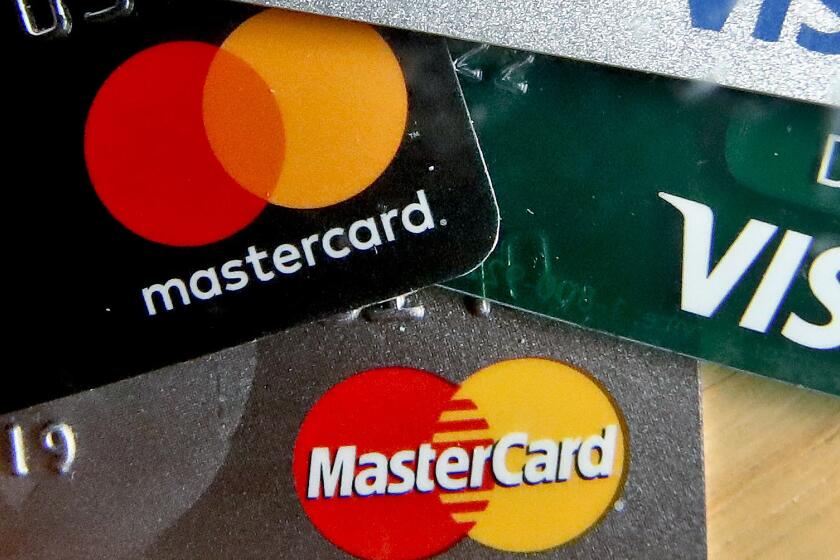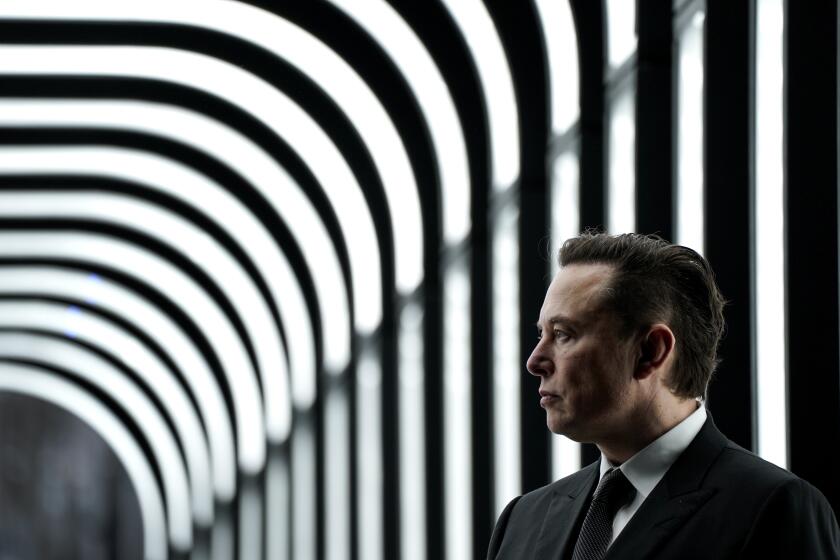THE DINER NICHE : Noshing on Nostalgia Is Big With Consumers and Developers
- Share via
By noon, the Johnny Rockets diner at the food court in Costa Mesa’s Triangle Square shopping center is awash in rock ‘n’ roll. Across town in the Ruby’s Diner at tony South Coast Plaza, waiters and waitresses in ‘50s-style garb are dishing out burgers to young, hip shoppers, moms with kids in tow and business types intent on doing lunch.
Never mind that most of the patrons weren’t even alive during the heyday of the diner.
“It seems that everyone wants a piece of this kind of food and restaurant,” said Jeffrey Campbell, chief executive of Johnny Rockets International Inc. in Irvine. “And that includes Generation Xers who are nostalgic for something they didn’t even live through.”
These latter-day diners are patterned after their no-nonsense predecessors, which popped up along Main Streets around the country before and after World War II. It’s a hot concept around the country among developers and mall operators who are scouting for entertaining alternatives to fast-food outlets and traditional sit-down restaurants.
Operators are trying to cash in on the growing consumer demand for restaurant experiences that are both filling and fun, said Greg Mickelson, vice president of retail development for Koll Real Estate Services Co. “These theme or concept restaurants are kind of exploding on the scene.”
Newport Beach-based Ruby’s, which started on the Balboa Pier in 1982, now has 25 locations and plans to add 10 more this year. Johnny Rockets first opened in 1987 and now has 78 restaurants in the U.S. and abroad, with plans for 1,000 within 10 years.
These and other diner chains have prospered because they fit nicely between fast-food joints and traditional eateries.
“These restaurants have small footprints and do big volumes,” said Carlsbad, Calif.-based restaurant consultant Hal Seiling. “And they bring a bit of excitement to the mall that, hopefully, rubs off on other businesses.”
Planet Hollywood and Hard Rock Cafe have hitched their wagons to the entertainment world to lure patrons. But while many consumers reserve those high-profile restaurants for special occasions, the diners pitch themselves as places where consumers can eat regularly.
Operators said the diner formula is especially popular with harried consumers who’ve grown weary of fast-food outlets.
“Most people over age 30 have to be dragged into a McDonald’s or a Burger King,” said restaurateur Ken Higginbotham, 49, a former Los Angeles resident who founded 5 & Diner, a chain based in Mesa, Ariz., that will have six locations open in Western states this year.
Big Mac-weary adults appreciate diners, Higginbotham said, because there’s a good chance they’ll get freshly cooked food that’s not been sitting under a heat lamp, and that a waiter will refill their drink and freshen their coffee.
Campbell, a longtime fast-food industry executive who joined Johnny Rockets in December, said diners owe their growth potential to the fast-food giants.
Although fast food still dominates, Campbell said that for some, it has become “a machine that has lost its soul. In hindsight, I can see that we forgot about the dining experience . . . and we created a hole that’s big enough to drive a large truck through.
“I call it the anti-fast-food niche.’ ”
Purists sniff that the diner chains are as tasteful as mashed potatoes that come from a box. They see the chain’s cookie-cutter locations and their “Happy Days” interiors as an insult to the stylish, authentic diners that still prosper in small towns and big-city neighborhoods.
Chain operators maintain that they’re simply using new technology and modern marketing to deliver the diner experience. It’s what author Richard J.S. Gutman, in his book “American Diners Then and Now,” describes as “home cooking, American food, plenty of it, just mounds of food on a plate, at a good price.”
Diner operators know they’ve got to deliver more than tasty dishes at a reasonable price. They say quality service and a touch of entertainment--like when the Johnny Rockets kitchen crew unexpectedly bursts into song--are key ingredients.
That’s why Ruby’s decorates its locations with ‘50s-era memorabilia and encourages waiters and waitresses to be gregarious and friendly.
Ruby’s founder and Chairman Doug Cavanaugh said absent the embellishments, his restaurant would be “just another coffee shop.”
Higginbotham, of the 5 & Diner chain, credits a lifelong love of diners to childhood memories of eating at the U-shaped lunch counter at the Apple Pan, a diner in Westwood that’s been serving the same fare since Truman was president.
Higginbotham, who’s visited traditional diners throughout the country, describes the Apple Pan as one of Southern California’s oldest diners.
And the according to the Apple Pan’s third-generation owners, it’s no accident that the large chains bear more than a passing resemblance to the restaurant.
“Johnny Rockets, as far as I can see, has the same look, the same presentation,” said Sunny Sherman, a granddaughter of founders Ellen and Alan Baker. “They copied us right down to the way their menu looks.”
From the outside, Johnny Rockets and Ruby’s seem to be carbon copies, but there are noticeable differences.
Johnny Rockets’ bare-bones menu showcases burgers and sandwiches, soft drinks, shakes and desserts. Ruby’s menu stretches far beyond that basic fare to include Cobb salads and vegetarian burgers.
Ruby’s also serves wine and beer, but Cavanaugh notes that “we can make more money off of a milkshake than a beer, so we don’t push the alcohol sales.”
Both chains are privately held and refuse to discuss revenue and profit figures. But average checks at the restaurants are in the $6 to $7.50 range. That’s not too much more than the most expensive meal at a burger joint, but the average check rests comfortably below that of a higher-end restaurant.
*
Industry observers expect a flurry of activity in the diner segment as chains jockey for position with other restaurants that blend fun and food.
“The diner concept has been hot for a couple of years now,” Mickelson said. “So it’s not as new as some of the other concepts that are coming out--like the Motown Cafe and the Fashion Cafe.”
Anaheim-based CKE Restaurants, the parent company of the Carl’s Jr. fast-food chain, hopes to get in on the action with its pending acquisition of the six-unit Galaxy Diner chain located in San Diego and elsewhere in the Western U.S.
And several small regional players, including Maryland-based Silver Diner, are talking about dramatic expansions.
Ruby’s is opting for a slower-growth strategy. The home-grown chain--Cavanaugh named it after his mother--now has first franchise restaurant in Ardmore, Pa.
Cavanaugh operates a Ruby’s on Seal Beach Pier and is building one on Huntington Beach Pier. He’ll continue to focus on Southern California, but has signed leases in Las Vegas, the Bay Area, the Pacific Northwest and the Southwest.
Ruby’s in the past has raised expansion funds through a series of limited partnerships. Cavanaugh hasn’t ruled out an initial public stock offering, but he doesn’t “have a fervent desire to run a publicly held company.”
Campbell wants Johnny Rockets to have a strong overseas presence. All but 17 of the chain’s restaurants are franchise locations and the company intends to continue using that means to fuel growth.
The chain’s growth was stalled in recent years by a courtroom battle that pitted founder Ronn Teitelbaum against an early investor. The fight ended in 1995 when an investment group led by Patricof & Co. Ventures Inc., a New York-based venture capital firm, acquired the company in a deal valued at $44.5 million.
While Teitelbaum remains with Johnny Rockets as a consultant, Patricof brought in Campbell, former chairman of the 6,000-unit Burger King chain, to help craft the chain’s expansion plan.
Campbell is betting that Johnny Rockets’ self-proclaimed “original hamburgers” will do well in foreign markets. “It’s part of rock ‘n’ roll, blue jeans and burgers,” Campbell said. “Hamburgers are a food that embodies a piece of American pop culture. This is a concept that’s going to travel very well overseas.”
Linda McElvogue, who opened Pop’s Cafe nine years ago on 9th Street in Santa Ana, understands the allure that makes Johnny Rockets’ owners want to export this particular part of Americana.
But McElvogue doubts that even the best-managed chain can engineer into its locations the individual charm that a traditional eatery holds. Her cafe--it could easily have been named Pop’s Diner--is located in a building that’s served as a restaurant since a place named Jennie’s opened in the late 1930s.
Patrons who want a quick cup of coffee can huddle around the counter that dates back to the 1940s, and the small dining area is jammed with memorabilia. The menu is top-heavy with homemade dishes, and customers rave about the breakfast pancakes and homemade onion rings cooked up at lunch.
“You just can’t take this kind of building and make it something modern,” McElvogue said. “This was meant to be an old-style place named Pop’s.”
(BEGIN TEXT OF INFOBOX / INFOGRAPHIC)
Retro Dining
Two Southern California-based restaurant chains have carved a niche between fast food and sit-down eateries by offering customers an excursion back to a 1940s-era diner. How Irvine-based Johnny Rockets and Newport Beach’s Ruby’s compare with other eateries in terms of average meal price:
Fast food
Carl’s Jr.: $2.97
Del Taco: $2.25
Diners
Johnny Rockets: $6.50
Ruby’s: $7.00
Coffee shops/family dining
Cocos: $6.41
Red Robin: $8.50
Youth-oriented
Planet Hollywood: $16
Hard Rock Cafe: $15
Fine dining
Antonello Ristorante: $36
Bistango: $30
Note: Average meal and price determined by individual restaurants
JOHNNY ROCKETS
Headquarters: Irvine
Founded: 1987
President/CEO: Jeffrey Campbell
Concept: 1940s malt shop
Locations: 78, including 20 outside U.S.
1996 new locations: 12
RUBY’S
Headquarters: Newport Beach
Founded: 1982
President: Doug Cavanaugh
Concept: 1940s malt shop
Locations: 25
1996 new locations: 10
Sources: Zagat Survey, Johnny Rockets, Ruby’s, Carl’s Jr., Del Taco, Family Restaurants Inc.
Researched by JANICE L. JONES / Los Angeles Times
More to Read
Inside the business of entertainment
The Wide Shot brings you news, analysis and insights on everything from streaming wars to production — and what it all means for the future.
You may occasionally receive promotional content from the Los Angeles Times.










